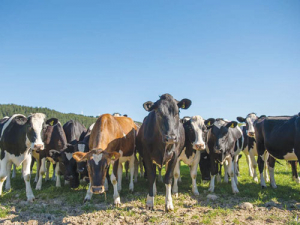In other words, the lower levels recorded on your laboratory tests mean you will not die of deficiency diseases.
In cattle testing, the lower limits are the minimum needed to avoid severe disease or death by deficiency.
Today most farmers have moved beyond this and are looking for more – better production and/or better growth rates. Not surprisingly, better inputs of relevant nutrients are required to achieve these outcomes.
In more recent times, better understanding of the mechanisms of best immune function and the relevance of different forms of each mineral is again changing what is regarded as optimum blood or tissue levels for specific nutrients, especially trace elements.
Consequently, there is no one right answer for any individual farm at any given time re the ‘correct’ level. In fact, for many of the current recommendations for upper levels of certain trace minerals, there is no scientific basis for the numbers given, as we live in a changing world. Eliminating disease due to inadequate inputs was easy; moving on from there depends on expectations of performance, and health.
No trace element is a magic bullet; they are part of a complete diet. Supplementing extra product ‘A’ will not produce additional output if something else (e.g. drymatter or energy intake) is limiting, i.e. being used to the max already. No animal can make meat or milk from air; it is the total that is important.
Similarly, the form of the mineral, e.g. sulphate or proteinate, will greatly influence outcome and safety. Many of the upper limits of safe supplementation were based on the use of mineral forms of elements; much more effective and safer forms are now available which provides greater opportunity to enhance outcomes.
Efficiency of use will differ for different forms and different farms. The most effective method of administration is the one that is most practical and is going to be done properly on any particular farm. However, the nearer we can mimic animal requirements and use, i.e. constant small amounts all the time (at a minimum, daily) without compromising some other nutrient (e.g. unpalatable water, complexing minerals etc.) the more effective the use and the best outcomes.
Increasingly animal welfare and comfort should also be a concern; constant injections will be difficult to justify to consumers when other methods are available.
For animals not able to receive daily supplements, especially those not handled daily, intra ruminal boluses are an excellent option. Young animals on grazing properties are obvious candidates, especially if the initial treatment can be given before they leave the home farm. While treatment has benefit for growth and health, part of the response to supplementing replacements is to optimise immune function not only while away but potentially right through their first calving.
Breeding bulls are often the forgotten group that also have requirements for semen quality, not just for health and growth. While treating mature bulls is fraught with risk, weaners and yearlings would benefit from better attention to nutritional detail, and intra ruminal boluses are ideal.
• Sue Mackie is principal dairy consultant at Dairy Production Systems Ltd.
















